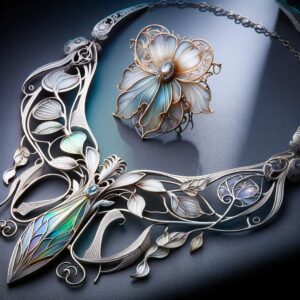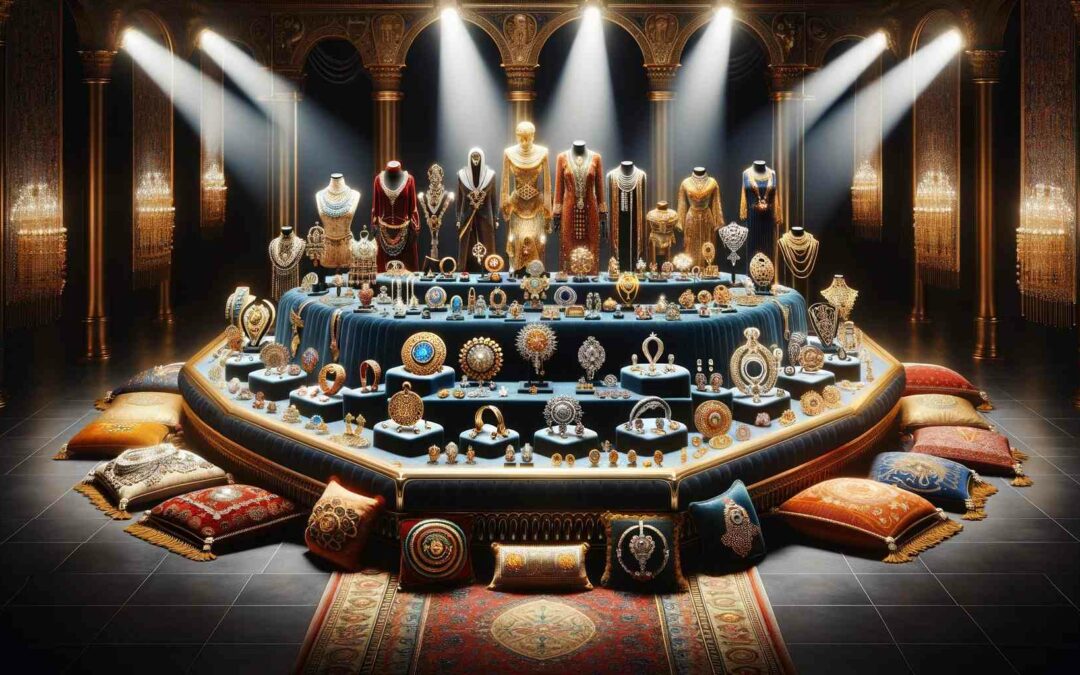Article Contents
- 1 Key Takeaways About The Impact of World’s Fairs on Jewelry Consumerism
- 2 The Historical Significance of World’s Fairs on Jewelry
- 3 Innovative Materials and Designs
- 4 Art Nouveau and René Lalique’s Impact
- 5 Transition to Modernism
- 6 Femme Métal: Influential Women in Jewelry Design
- 7 How Has Jewelry Evolved to Cater to Masculine Styles Featured in World’s Fair Showcases?
- 8 The Potential Return of World’s Fairs
Key Takeaways About The Impact of World’s Fairs on Jewelry Consumerism
- Jewelry became a major attraction at world’s fairs in the early 20th century, showcasing innovative designs and materials.
- World’s fairs significantly impacted jewelry design, marketing, and consumerism, with many exhibited items ending up in museums or department stores.
- The rise of Art Nouveau and the recognition of René Lalique’s talent were pivotal moments in jewelry design, influenced by world’s fairs.
- World’s fairs transitioned from traditionalism to modernism, with the term Art Deco being coined in 1925, and jewelry becoming a huge draw for visitors.
The Historical Significance of World’s Fairs on Jewelry
The historical significance of world’s fairs in jewelry’s evolution and impact has been a profound testament to the industry’s global reach and influence. These fairs played a pivotal role in promoting cultural exchange through the display of diverse jewelry styles and techniques from around the world.The impact of world’s fairs on jewelry consumerism cannot be overstated, as they provided a platform for manufacturers to showcase innovative designs, influencing consumer preferences and purchasing behaviors.Moreover, world’s fairs facilitated the recognition and appreciation of various cultural jewelry traditions, fostering a deeper understanding and celebration of diversity.This intersection of cultural representation and consumer engagement at world’s fairs exemplifies the instrumental role of jewelry in promoting cross-cultural appreciation and understanding, making it a powerful tool for global connection and exchange.Innovative Materials and Designs
Innovations in materials and designs revolutionized the jewelry industry at world’s fairs. Exhibitors revived ancient techniques, breathing new life into traditional styles. They explored unconventional materials, pushing the boundaries of what was deemed acceptable in jewelry design.Castellani, for instance, reintroduced long-lost techniques of granulation and micro-mosaics, captivating audiences with their exquisite craftsmanship. World’s fairs became the epicenter of wild creativity, showcasing the peak of innovation in jewelry and decorative arts.This period also witnessed the rise of Art Nouveau, with René Lalique gaining international renown for his mystical, nature-inspired designs. The world’s fairs played a pivotal role in the recognition of Lalique’s talent and the transition to modernism, influencing the direction of jewelry design for years to come.Art Nouveau and René Lalique’s Impact
René Lalique’s influence on contemporary jewelry and the Art Nouveau movement was profound. His imaginative use of materials and enchanting motifs, such as mystical nudes, serpents, and insects, embodied the essence of Art Nouveau.Lalique’s legacy in the jewelry industry is characterized by a departure from traditional jewelry designs, embracing organic forms and asymmetry. His work not only put jewelry design on the world map but also inspired a new wave of creativity and innovation. Lalique, alongside other prominent figures like Georges Fouquet and Gallé, played a pivotal role in shaping the Art Nouveau movement, leaving an indelible mark on the world of jewelry design.
Elegance Redefined: Art Nouveau Necklace And René Lalique Style Brooch.
Transition to Modernism
René Lalique’s influence on contemporary jewelry and the Art Nouveau movement was profound, marking a pivotal moment in the evolution of jewelry design at world’s fairs. As the world transitioned towards modernism, this shift had a significant impact on jewelry design and the atmosphere at world’s fairs.The influence of Art Deco, in particular, played a crucial role in shaping the direction of jewelry showcased at these international exhibitions. Here’s how modernism’s influence and the impact of Art Deco transformed the world of jewelry at world’s fairs:- Embracing Geometric Shapes: Art Deco introduced bold geometric shapes and lines, revolutionizing the traditional aesthetic of jewelry design.
- Innovative Use of Materials: Modernism encouraged the use of new materials, such as platinum and industrial metals, leading to avant-garde and futuristic jewelry pieces.
- Emphasis on Functionality: Art Deco emphasized functionality and practicality in jewelry, reflecting the changing lifestyles and attitudes of the era.
- Global Influence: The impact of Art Deco on world’s fairs transcended borders, influencing jewelry design and consumer preferences on an international scale.
Femme Métal: Influential Women in Jewelry Design
The influence of Art Deco and modernism at world’s fairs paved the way for the recognition of influential women in jewelry design, marking a significant shift in the evolution of jewelry craftsmanship and creativity.Celebrating women: Influential female jewelry designers have emerged as pioneers, breaking barriers in a traditionally male-dominated industry. Their innovative designs and creative vision have revolutionized the jewelry world, inspiring and empowering women around the globe. As these talented individuals continue to thrive and gain recognition, there has been a noticeable rise of male jewelry designers entering the industry as well. This shift reflects the evolving landscape of the jewelry world and demonstrates the inclusive and diverse nature of creativity and design. Empowering women: Jewelry serves as a powerful means of self-expression, allowing designers to convey their unique perspectives and assert their creative talents.From Lalique’s mystical motifs to innovative contemporary designs, women have played a pivotal role in shaping the trajectory of jewelry artistry.Their contributions have enriched the industry and inspired a new generation of designers to push boundaries and redefine the art of jewelry making.How Has Jewelry Evolved to Cater to Masculine Styles Featured in World’s Fair Showcases?
Jewelry design has evolved to embrace bold, sleek, and structured aesthetics, aligning with modern tastes for masculine style jewelry. These designs, showcased prominently in World’s Fair exhibitions, highlight strong lines, dark metals, and understated elegance tailored to men, blending functionality and fashion to redefine traditional perceptions of adornment.

